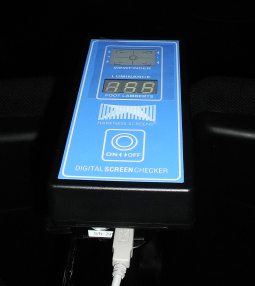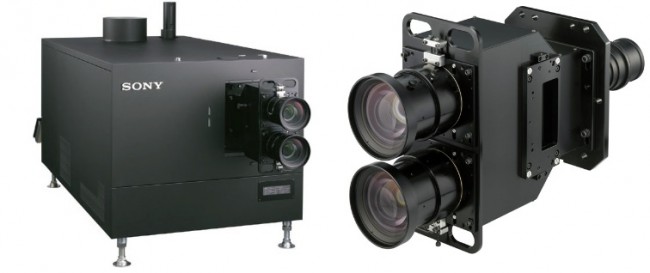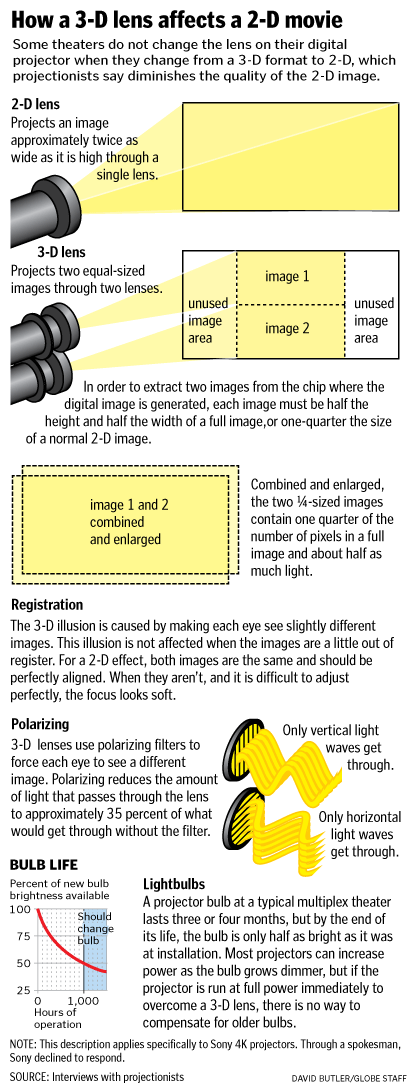Long Live InterOp
It was the best of times, it was the worst of times. The engineers contributing to SMPTE, and the studios who contributed to DCI, came up with enough elements to create a secure and beautiful D-Cinema environment. The same studios financed the equipment qualification standards and partially financed equipment purchases for many exhibitors. These exhibitors agreed to buy this qualified equipment and use it in a way that somewhat assured that copyrights and quality-better-than-film would be typical on screens world-wide.
Fortunately, there were written and unwritten agreements which allowed the simple DCinema origins of MPEG and a fairly loose mechanism of security keys to transition to the full on (and just recently completed) versions of standards, specifications and practices known as SMPTE Compliant Digital Cinema, with SMPTE Compliant DCPs and Security and screen fulls of other ingredients. These transitional agreements are known as InterOp.
Unfortunately, InterOp worked well enough to be added to…and added to…and added to…
For example, the simplest multimedia tools use metadata to describe computer needed info and human interface info within the songs or movies that we get to and from iTunes and Hulu and Netflix. Workers who had to get equipment and people working together in the InterOp world had to come up with an interim…maybe one year or so to live…Naming Convention. It wasn’t useful for computers at all, and cumbersome for humans at best and kept getting added to without increasing the number of characters since some old equipment only had so many display characters…kinda like computers in the 60’s. There were (and are, since years later it is still in use) dozens of ways for it to go wrong, beginning with the fact that some studios chose to ignore it when it gets in the way (according to the logic at their end of the string) while projectionists might miss some nuance that is needed for logic at their end of the string.
What happened to adding metadata like modern sciences do, and which everyone knows eventually will be needed? There are other panics with higher priority. It sits partly formed, probably until it becomes a keystone item needed for some other important development.
There are other examples of InterOp and loose de facto ‘standards’ living beyond their time, the most garish being what is hopelessly called 3D.
Instead of using valuable engineering time to progress the computer to computer interface and give exhibitors a fighting chance at perfection, engineers have had to shoehorn one feature after another into the InterOp structure. It is done with the best intentions, of course. It begins with, “My customers were asking for this now, not at some point in the SMPTE-Compliant future.” It ends with, “I have to do this because my competitor is bragging about how they can do this at no extra cost even though it violates the spirit and the essence of every standard.”
There are too many examples to mention ranging from forensics and audio mapping. Specifics aren’t as important as the fact that the entire industry has floated out far enough from land that some see letters in the water, and some seem to think that they spell H – E – R – E B – E D – R – A – G – O – N – S
DCinema Dragons don’t breathe fire. They are light suckers. They cause Dark Screens. Coming to theaters and drive-ins near you.
Why?
Many reasons, partly centered around the effects of software upgrades. Because the upgrade from InterOp to SMPTE-Compliant software is not a simple ‘add a feature or two’ software upgrade. At the best of times, you just never know what you will be causing when you hit that ‘Upgrade’ button. Did the software writer anticipate every single parameter of combinations of hardware and software that is in your situation?
There just are some odds that you come out of the hospital feeling worse than how you went in (look up HAI). Anyone with a computer has had software upgrades that worked for thousands of others, but did not work for them (look up: damn, not again.) There is probably some inverse squared proportionality involved as well. Getting closer to a deadline quadruples the odds of failure.
So, don’t change~! Jeez. That is sooo obvious. Which is what many do. Don’t get the first generation of anything, including upgrades. Especially during summer when all the big movies are playing.
But a horizon event approaches. Some InterOp juggling just won’t work for some combinations of . There are an amalgam of changes coming though, prompted by the teams of Jackson and Cameron. It might be easy to ignore the 60 frames per second requirement of a Cameron release (famous for pushing deadlines forward as he is), but The Hobbit will probably not be delayed. 48 frames per second, stereoscopic 3D. Will it work in the InterOp world? And what other changes will be made
Why 48fps? Phil Oatley, the post group head of technology from Park Road Post (Mr. Jackson’s facility in New Zealand) who spoke at the SMPTE/NAB DCinema Days last April said that they choose 48 because they didn’t know if equipment and exhibitors could change to 60fps in time and in significant numbers. As it turns out, all server and projector manufacturers have announced 48 and 60 fps capability. Sony even put a price on it…$3,000…which they can more easily do for their 13,000 users as they have always used an internal media block in their system.
In this case, Sony has something like the Apple advantage: They control the server, the media block and the projector so the odds are higher of getting a smooth transition. And, they have gotten DCI Compliance (at one moment of software version time…does HFR cause enough of a technology disruption that they need to re-certify?)
A TI-based projector with an SD-HDI interface will be a lot more complicated. An IMB (internal media block) needs purchasing and inserting, which isn’t a cheap investment. It is dependent upon TI-code and code from the projector manufacturer as well as code from the server all working together. How different is the server, which will have had its graphics-serving guts ripped out? …will that need a new cert? Check the DCI site for Compliance passed equipment.
But we have gotten off point. Back a few years ago you could sign a VPF deal and promise that you would use DCI-Compliant equipment and run with the latest SMPTE specs and recommended practices. At the time there wasn’t one piece of gear through the compliance procedures. And since you know that there is no SMPTE Police checking your screen for the required 48 candela/square meter luminance standard, you didn’t feel bad breaking the luminance number when showing 3D, a number that approached moonlight-equivalence at the sides of the theater and barely reached 10cd/m2 in the center. (For info on the light fall off from silver screens, see: 23 degrees…half the light. 3D What?)
But the history of the studios has been to look the other way until there is a technology that fulfills the DCI requirement. When Doremi proved they could do JPEG as the standard required, MPEG suppliers were given notice. When laser light engines can provide 3D at 48 cd/m2 (14 foot-lamberts), will the studios insist that passive 3D systems with their horrid high gain silver screens are no longer allowed (as was done in France recently? See: The Death of Silver Screens~! Vive la France)
We’ll see, but this doesn’t have anything to do with HFR. HFR is outside the DCI specs. It falls into the ‘no less than’ zone, similar to the color primaries. Laser suppliers can pick primaries outside the capabilities of xenon if that is financially and politically worthwhile, just as long as they don’t chose primaries inside the DCI/SMPTE limits.
So what does HFR and SMPTE compliance have to do with each other? Only that they are two locomotives that are running on two separate but not parallel lines. There is no firm deadline for SMPTE compliant DCPs, and no one is saying that InterOp compliant DCPs have a limited life. In fact, the studios expect that DCI equipment will play future SMPTE-compliant DCPs as well as what will become ‘legacy’ InterOp DCPs.
But something, at some time, is going to bulge the balloon of InterOp to the point that going SMPTE-Compliant is the logical move. Engineers at the manufacturers are just going to say, “I can’t play this game anymore. We were promised SMPTE would be the container that fit everything, I did the work, I will InterOp no more.”
There is rumor that this will happen soon. There is a particular setup that is rubbing against the InterOp balloon. Exhibitors are saying, “We don’t want to change until the summer season is over.” Will everything play nice together if only one condition is changed in a system? Possibly. How can you increase your odds?
Go to the ISDCF site that lists all the latest software/firmware versions for the equipment in the field. See to it that you have the latest. That will increase the odds. ISDCF Current Versions
Another thing you can do is prepare a database listing all of your equipment at each projection position, all of the software and firmware versions and all the serial numbers, and leave a field where you can download your .pem file from each piece of gear. Save this and get ready for a note from your distribution center asking for this info.
It was the best of times, it was the worst of times,
it was the age of wisdom, it was the age of foolishness,
it was the epoch of belief, it was the epoch of incredulity,
it was the season of Light, it was the season of Darkness,
it was the spring of hope, it was the winter of despair,
we had everything before us, we had nothing before us,
we were all going direct to heaven, we were all going direct the other way
– in short, the period was so far like the present period,
that some of its noisiest authorities insisted on its being received, for good or for evil,
in the superlative degree of comparison only.
Charles Dickens – Tale of Two Cities





